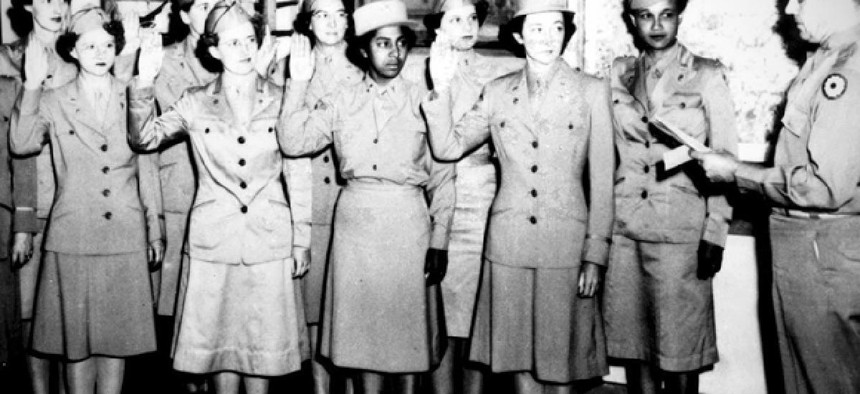
Women Army Auxiliary Corps members are sworn into the Women's Army Corps at Fort Custer, Mich., in 1943 United States Army
Timeline: The March Into Combat
More than 200 years of precedent sets the stage for reversing the ban on women in direct battlefield roles.
As Pentagon leaders figure out how to integrate female service members into direct ground combat units, they have more than 200 years of precedent to fall back on. Women have been on the battlefield since the American Revolution, albeit surreptitiously at times. Before World War II, most of them were nurses or cooks or laundry maids. Others went undercover, disguising themselves as men to serve on the front lines.
Indirect combat and support roles have been open to female service members for decades. In 1974, for example, Barbara Allen Rainey became the U.S. military’s first female pilot. By 2009, 92 percent of specialties were open to service women, according to a Defense Department report for the White House Council on Women and Girls. Women comprise 14 percent of active-duty military members, and more than 280,000 have deployed to Southwest Asia since 2001, according to the Defense figures. About 150 have been killed, and more than 800 have been wounded.
The decision to reverse the 1994 Defense policy excluding female service members from direct ground combat units is not without controversy. Some critics say women lack the physical and psychological strength to fight on the front lines, and others believe integrating the genders could exacerbate the military’s troubling record of sexual harassment and assaults. But challengers of the ban say the real danger is precluding women from receiving the same combat training as their male counterparts.
Already more than 90 percent of military jobs are open to women. The Pentagon plans to open new positions in stages after the services review their current structure to determine how and when to integrate combat units. Here’s a look at how military roles for women have evolved through the years.
Caitlin Fairchild and Jodie Morris contributed to this report.






